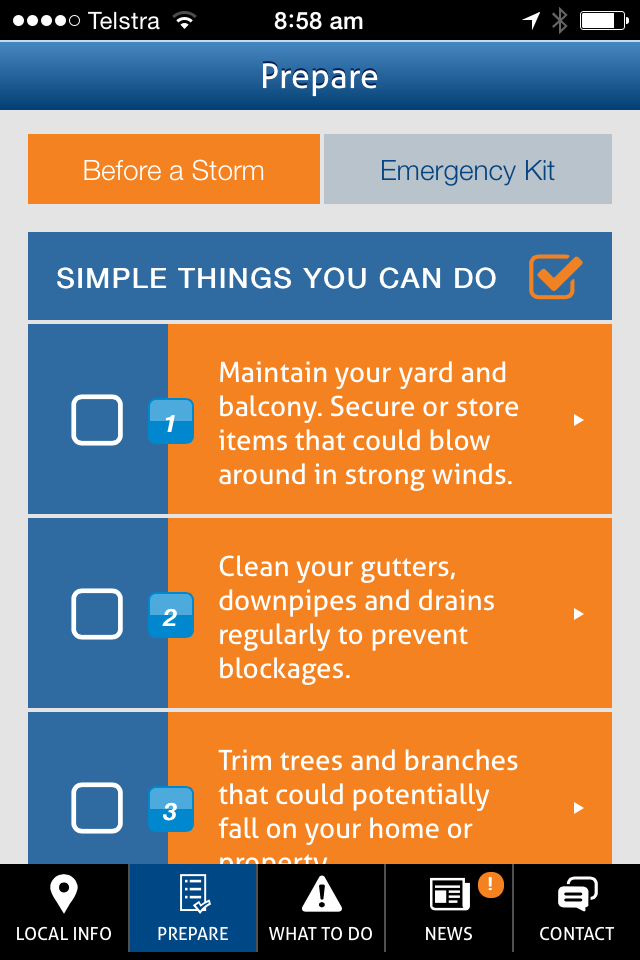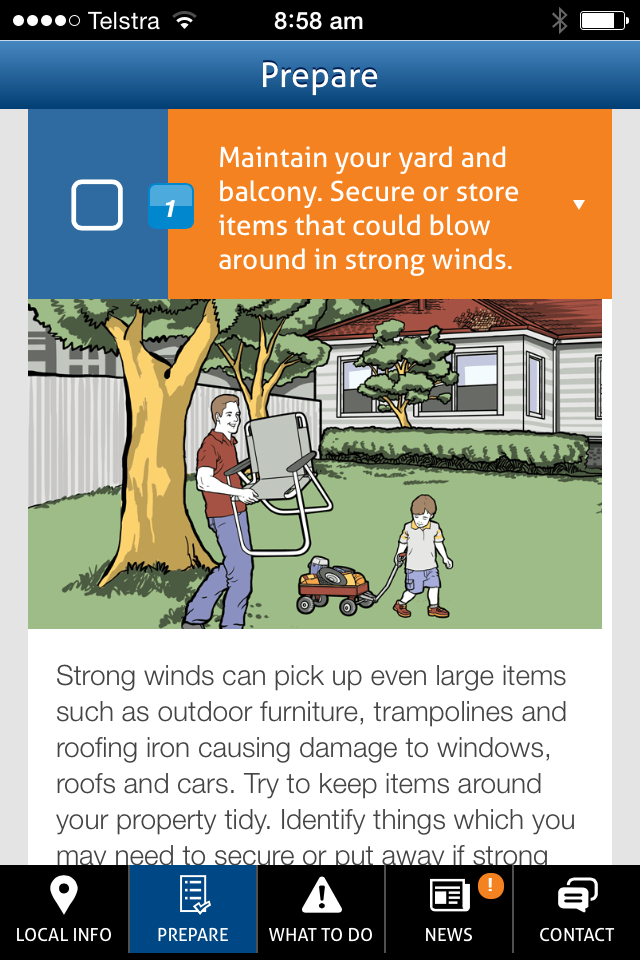Storm, Flood and Tsunami Safety
StormSafeAre you at risk?
Storms can happen anywhere, at any time of the year. It is important to prepare your family and prepare your property now and stay prepared all year round. Storms are the most costly natural disaster to affect NSW, causing an estimated average of $217 million dollars damage annually. (Source: BTE 2008)
During storms it is important to protect your family and property from the major impacts such as strong winds, hail and rising water levels (flash flooding).
Damaging winds can bring down trees, branches, power lines, remove roofs and blow around outdoor items, for example outdoor furniture and trampolines
- Hail can injure people and damage property
Heavy rainfall can cause water to:
- damage exposed homes and belongings
- rise rapidly, flooding homes, property and roads
- drain rapidly making floodwaters, drains, and other water courses a safety hazard
Damaging surf can be unsafe and flood homes and properties in coastal areas.
You may also be indirectly affected by storms; access roads may be blocked or you have no power, utilities or telephone connection.
Prepare for a storm NOW
There are eight simple things that you can do now to prepare your home and help reduce the potential damage caused by severe storms.
1. Maintain your yard and balcony. Secure or store items that could blow around in strong winds
2. Clean your gutters, downpipes and drains regularly to prevent blockages
3. Trim trees and branches that could potentially fall on your home or property
4. Fix any damage to your roof, including broken or missing tiles
5. Check your insurance policy is current and adequate
6. Make a Home Emergency Plan for your family that outlines what you would do in an emergency
7. Prepare an emergency kit with essential items in case you lose power or need to leave home in an emergency
8. Listen to your local radio station and other media for weather warnings
When a STORM WARNING is broadcast
Servere Weather Warnings and Severe Thunderstorm Warnings are issued by the Bureau of Meterology to alert communities to the threat of severe weather.
When a warning is issued for your area (but before the storm arrives), there area few things you can do to help protect your family ad property;
- Move indors, bringing children and pets with you
- Park your car under secure cover and away from trees, powerlines and drains.
During a storm
During a storm, there are simple things you can do to help protect your family:
- Never enter or travel through floodwater
- Stay indoors, clear of windows
- Stay clear of creeks, drains, causeways, gutters, streams, fallen trees, power lines and damaged buildings
- If driving, put your hazard lights on and pull over to the side of the road keeping clear of drains, causeways, streams, creeks, trees and power lines
- If outdoors, seek secure shelter away from drains, causeways, streams, creeks, trees and power lines
- Listen to your local radio station and other media for information, updates and advice
- For emergency assistance in floods and storms, call the NSW SES on 132 500
After the storm
- Keep listening to your local radio station for information, updates and advice
- Check your house or property for damage
- Stay clear of creeks, drains, causeways, gutters, streams, fallen trees, power lines and any damaged buildings
- Check to see if your neighbours need help
- Do not go sightseeing as this may hinder recovery efforts or put yourself and others at risk.
Your Emergency Checklist
Your emergency kit provides items you might need if you lose power or need to leave your home in a hurry. Your emergency kit contents:
- A portable radio with batteries
- A torch with spare batteries
- A first aid kit
- Candles and waterproof matches
- Important papers including emergency contact numbers
- Copies of any emergency plans
- A waterproof bag for valuables
- When leaving or evacuating your property, place into your emergency kit
- Medications
- Supplies for your baby
- Supplies for any other people in your care
- Appropriate clothing and footwear
- Food and drinking water


